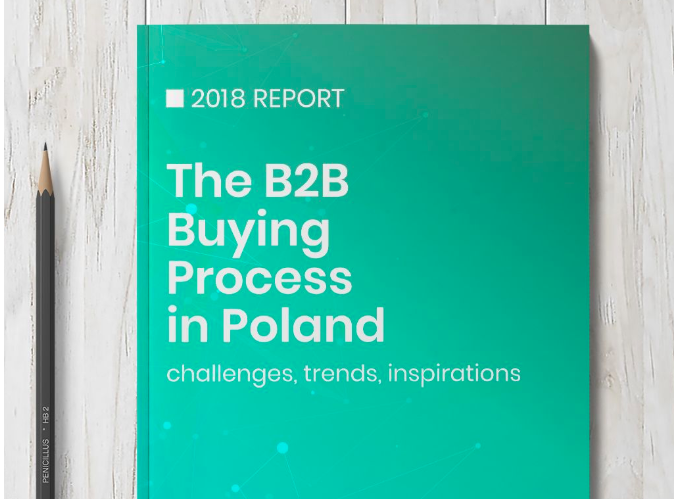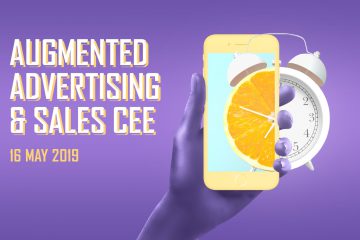How Can E-Commerce Keep Up with Millennials?
Millennial customers are having a huge impact on the e-commerce market. How can companies reach these influential consumers?
Millennials – people born between 1980 and 1995 – make up 28% of Polish society. They were brought up with the rapid development of digital technology and are now an attractive group for the e-commerce industry. Millennials embrace mobile and Internet solutions and are accustomed to shopping at their convenience.a
Plus, Millennials are independent. More than any other group, they prefer to conduct their own research without the initial assistance of a salesperson or other intermediaries. (You can read more on this subject in our new report, The B2B Buying Process in Poland: Challenges, Trends, Inspirations.)
So how can e-commerce companies reach them?
[Download free report, The B2B Buying Process in Poland: Challenges, Trends, Inspirations.]


Millennials Are Information-Seekers
Mobile devices have taught Millennials that things they need are always at hand, so they expect to find useful materials easily and quickly. For them, collecting information often starts with a company’s or product’s website. The content they discover on the site will influence their further search and determine how they perceive that product or company. Ebooks, reports, and guides are also rich sources of information, but video or infographics allow Millennials to absorb the information quickly.
An example of a store that uses content correctly is the American technology retailer Best Buy. Part of their shopping platform is a guide for people planning to buy a computer. Customers use this to learn what elements are the most important in their search and to make the right choice for their needs.
Storytelling is also playing an increasingly important role in e-commerce content. Presenting products alongside their history or evolution enriches the emotional impact of the message and creates a more authentic feel. Relating offers to individual customer’s needs is also an effective way to emphasize a positive potential change.
Customers expect the seller to understand their needs well. Providing them with unique content can certainly affect their choice. A regular blog or YouTube channel can convince them that this is the expert they need.
Millennials also love interactive tools. Chatbots are a growing trend; users get a quick response with the feel of a personalized experience. There is a wide range of applications for chatbots, from customer service to a personal shopping assistant. Whatever the use, a chatbot’s ability to conduct simple conversations and solve customer problems has made them quite valuable to e-commerce.
The showcase for chatbot technology is the American grocery chain Whole Foods, which made a chatbot available within Facebook Messenger. The user can give this chatbot a list of specific ingredients and receive matching recipes. If the person is on a diet, the bot will consider this before displaying its culinary proposals. The bot even understands some emojis: sending it a pizza emoji will prompt it to return a list of pizza recipes.
Millennials Are Mobile-Oriented
Offers directed to Millennials should look equally good on all devices. Even mobile-optimized websites or dedicated apps may not fully meet this requirement. Only PWAs (Progressive Web Applications) provide a mobile experience that combines the best features of apps and websites and eliminates their shortcomings. With a PWA, users can access a native web app which, despite not being installed on their device, retains full functionality. PWAs can work online, offline, or in the background; they can display notifications and use device functions as a camera or geolocation.
Among companies making great use of the PWA is the e-commerce giant Alibaba. Despite the option of a mobile app, many of Alibaba’s mobile clients preferred to visit the website via their browser. To better meet these consumers’ needs, Alibaba.com created their own PWA, which integrated all the website’s functions on all devices. According to a case study on the Google Developers site, this resulted in 76% higher conversions across browsers, significantly more active users, and a much higher interaction rate.
Companies that want to switch to the PWA standard can start by analyzing the current state of their website. There are many excellent tools available for this purpose, such as Google Lighthouse, which conducts a site audit. Feedback from such tools allows businesses to choose between transferring their current website to the PWA standard or creating a new PWA. If they select the second option, the company can build a PWA on its own or utilize a solution like e-point’s PWA Commerce Accelerator.
Millennials Have Social Media In Their DNA
Millennials didn’t have to adapt to Facebook and Instagram; they grew up with them. So it’s not surprising that many Millennials love to share their lives instantly on social media. They connect with friends, comment on their activities, ask for advice when shopping, and see how other customers have fared when considering some purchase.
Having a social media presence is one of the main ways organizations are trying to reach Millennials. Social media is not just an additional way to broadcast the latest company news; it’s an opportunity to promote customer engagement. Millennials love to follow friends and share their opinions. Encouraging their activity in company channels strengthens brand recognition for this generation.
IKEA is an example of a manufacturer and retailer that’s mastered this method of communication. One of the company’s social media efforts involved user-generated content showing the creative application of IKEA products. This shifts the burden of creating content to the consumers, but it demands that the company first engages those consumers. This strategy also lends weight to the retailer, as user content comes across as more authentic to customers.
Of course, social media content can also be developed by retailers. And this can perform very well. Athletic mega-brand Nike used the popularity of inspirational memes on Pinterest to fuel a campaign aimed at active women; the images with motivational quotes show strong, powerful women, dressed in Nike products.
E-Commerce Can Connect with Millennials
Most Millennials expect that companies will grab their attention by providing them with valuable content – which they will be able to read on any device. They also often use social media, so they expect to find necessary information there. Companies, especially those in e-commerce, should actively use the same channels. Otherwise, they may become invisible to a large chunk of the market.
Millennials are native e-commerce customers: the digital reality is part of their world. They are connected, informed, independent, and willing to adopt new technologies. For companies that to match their expectations, this is a highly attractive target market.
Promuj biznes na łamach Komerso.pl!









